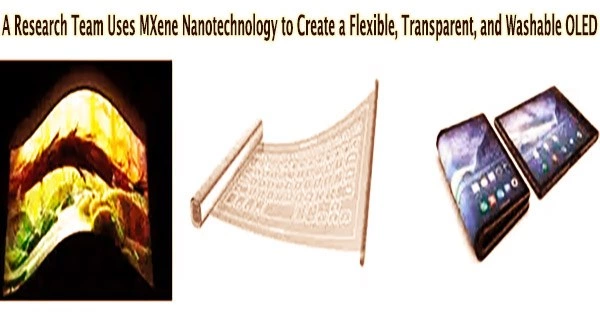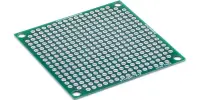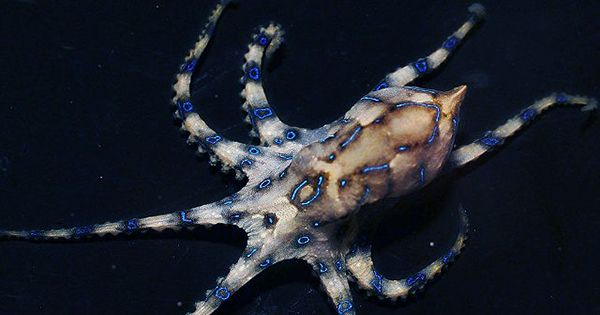In reality, transparent and flexible displays, which have drawn significant interest in a number of industries, including automotive displays, bio-health care, the military, and fashion, are known to break readily when subjected to minor deformations. Many transparent and flexible conductive materials, including carbon nanotubes, graphene, silver nanowires, and conductive polymers, are the subject of intensive research to address this issue.
A joint research team led by Professor Kyung Cheol Choi from the KAIST School of Electrical Engineering and Dr. Yonghee Lee from the National Nano Fab Center (NNFC) announced the successful development of a water-resistant, transparent, and flexible OLED using MXene nanotechnology. The material can emit and transmit light even when exposed to water.
This research was published as a front cover story of ACS Nano under the title “Highly Air-Stable, Flexible, and Water-Resistive 2D Titanium Carbide MXene-Based RGB Organic Light-Emitting Diode Displays for Transparent Free-Form Electronics.”
MXene is a 2D material that can be made in large quantities using solution techniques. It has good electrical conductivity and optical transmittance. Nevertheless, despite these appealing qualities, MXene’s possibilities as a long-term electrical device were constrained since its electrical characteristics were easily damaged by ambient moisture and water. As a result, the material was unable to be organized into a matrix that can show information.
Professor Choi’s research team used an encapsulation tactic that can protect materials from oxidation caused by moisture and oxygen to develop a MXene-based OLED with a long lifespan and high stability against external environmental factors. The study team focussed on constructing an encapsulating membrane after first analyzing the mechanism of MXene’s electrical conductivity deterioration.
To improve the reliability of MXene OLED, we focused on producing an adequate encapsulation structure and a suitable process design. By producing a matrix-type MXene OLED and displaying simple letters and shapes, we have laid the foundations for MXene’s application in the field of transparent displays.
So Yeong Jeong
The group eventually created a double-layered encapsulation membrane by blocking moisture and supplying flexibility through residual stress offset. In order to allow washing in water without deterioration, a thin plastic film with a thickness of a few micrometers was also applied to the top layer.
Through this study, the research team developed a MXene-based red(R)/green(G)/blue(B) OLED that emits a brightness of more than 1,000 cd/m2 that is detectable by the naked eye even under sunlight, thereby meeting the conditions for outdoor displays.
As for the red MXene-based OLED, the researchers confirmed a standby storage life of 2,000 hours (under 70% luminescence), a standby operation life of 1,500 hours (under 60% luminescence), and a flexibility withstanding 1,000 cycles under a low curvature of under 1.5mm.
In addition, they showed that its performance was maintained even after six hours of immersion under water (under 80% luminescence). Additionally, the MXene-based OLED was created as a passive matrix using a patterning process, and the team proved its application as a transparent display by showing letters and shapes.
Ph.D. candidate So Yeong Jeong, who led this study, said, “To improve the reliability of MXene OLED, we focused on producing an adequate encapsulation structure and a suitable process design.” She added, “By producing a matrix-type MXene OLED and displaying simple letters and shapes, we have laid the foundations for MXene’s application in the field of transparent displays.”
Professor Choi said, “This research will become the guideline for applying MXene in electrical devices, but we expect for it to also be applied in other fields that require flexible and transparent displays like automobiles, fashion, and functional clothing. And to widen the gap with China’s OLED technology, these new OLED convergence technologies must continue to be developed.”
















